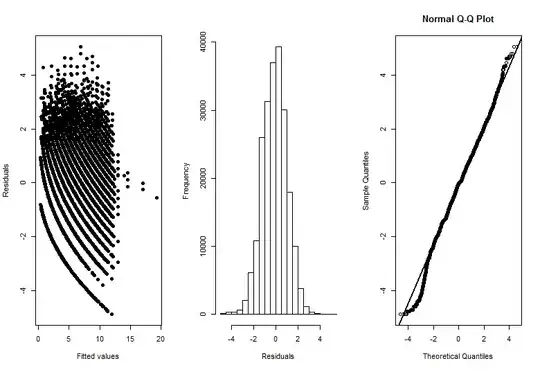I know how to solve if roll dice 2 time and the sum is 10, but by drawing table. Therefore, with 400 times and sum is 1350, that is ridiculous.
Let's say using Excel to solve the problem.
Should I use Binomial random function BINOM.DIST.RANGE(trials,probability_s,number_s,[number_s2]). But the thing is how to know probability of getting 1350 ?
I also thought about using Normal random variable function NORMDIST(x,mean,standard_dev,cumulative) using the data in the picture
However, the answer in the textbook is bigger than 0.8